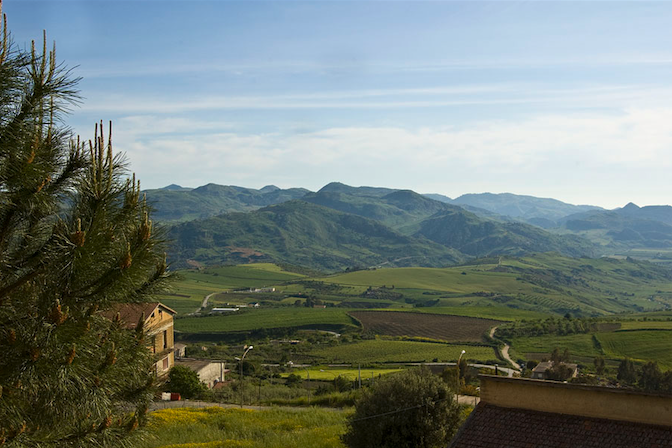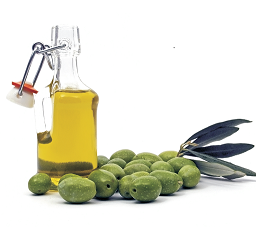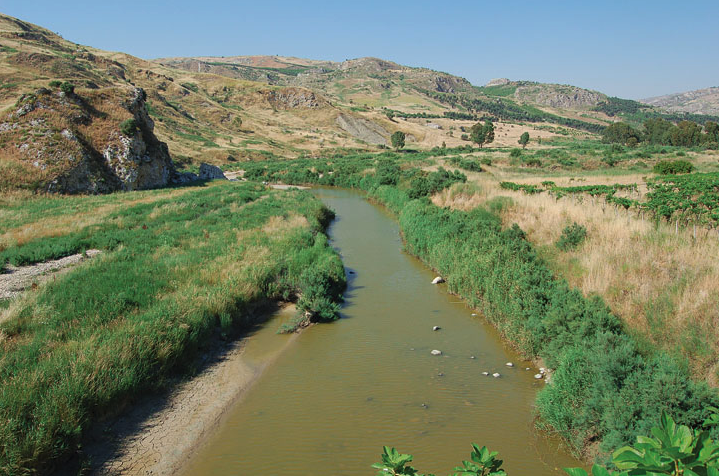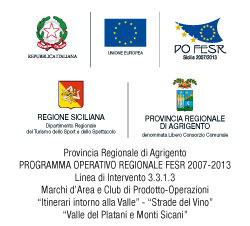 One of the steps required for those coming to Sicily and Agrigento, especially during Easter, is San Biagio Platani. The city center, set on a hill overlooking the great valleys where the rivers Platani and Turvoli, rose in 1635 by Giovanni Battista Gerardi who managed to get the licentia populandi and allowed the small settlement was born around a small church to start to develop gradually. Today it has a population of about 5000 inhabitants mainly dedicated to agriculture. The productions are most appreciated pistachio, olive oil, almonds and oranges.
One of the steps required for those coming to Sicily and Agrigento, especially during Easter, is San Biagio Platani. The city center, set on a hill overlooking the great valleys where the rivers Platani and Turvoli, rose in 1635 by Giovanni Battista Gerardi who managed to get the licentia populandi and allowed the small settlement was born around a small church to start to develop gradually. Today it has a population of about 5000 inhabitants mainly dedicated to agriculture. The productions are most appreciated pistachio, olive oil, almonds and oranges.

The fundamental event that attracts many tourists in San Biagio is the Feast of the Arches that takes place every year from Easter Sunday for the next three weeks. It is a manifestation of a religious and certainly among the most popular features of Sicily whose origins date back to the late seventeenth century, in the era immediately following the founding of the country. A centuries-old tradition that is linked to the significance of the event of the resurrection stressed the meeting between Christ and the Virgin Mary under the arches of bread to symbolize the triumph of life over death in a riot of cheering crowd. It is a kind of artistic competition between the two brotherhoods "Madunnara", devoted to Our Lady, and "Signurara", devoted to Jesus of Nazareth. A preparation that lasts months and involves artisans, workers, professionals, housewives, youth, adults, seniors, all animated by a collective effort but deployed on opposing sides. It is made more precious and artistically rich monumental arches of wood and reeds erected along the main street. A preparation in which products are used and the fruits of the earth, where the main actor is the bread, which worked with great skill takes on various shapes according to the typical expression of folklore and folk art.
Il centro da cui si sviluppa questa maestosa e preziosa esposizione è la Chiesa Madre in corso Umberto I e da questo punto, ideale baricentro del corso principale, gli artisti delle due confraternite danno sfoggio delle loro grandi capacità creative confrontandosi in una gara di reciproco superamento ma che presenta un’unica scenografia che si conclude o inizia nei due prospetti di accesso. Anticamente venivano eretti soltanto due archi centrali, con i telai triangolari di ferle e con gli intrecci di canne decorati con ciambelle di pane ed orlati di arance. Nel tempo tutto si è andato arricchendo sempre di più. Oggi la bravura degli esecutori si manifesta nell’attenta ricerca dei particolari, nella tecnica raffinata che esalta persino i dettagli dai singolari effetti plastici e figurativi. Cupole, campanili, volte, rosoni, fatti di canne e di salice, originali lampadari, le nimpe, realizzati con datteri, fontane zampillanti con al centro veri e propri monumenti di grande efficacia comunicativa, mosaici, raffiguranti episodi evangelici creati con i prodotti della natura e dove il pane è elemento essenziale dell’addobbo.
Monuments to visit
The monuments that can be admired in the old town are, the aforementioned Mother Church, the Church San Biagi and Carmine Church, both of the eighteenth century. and the Baron's Palace.
Not to be missed
To visit the collection of the best works done during the past editions of the festival of Easter Arches

 Aromas and Flavors
Aromas and Flavors
 Nature Reserve - Mouth of the Platani River and its valley
Nature Reserve - Mouth of the Platani River and its valley

